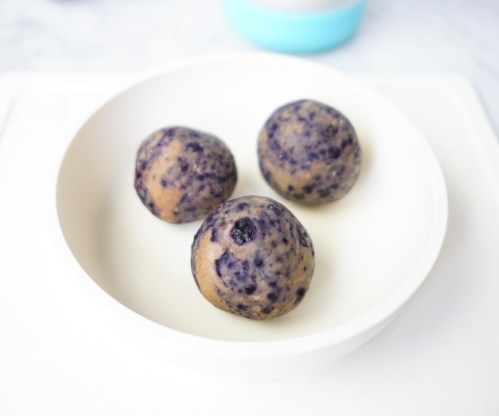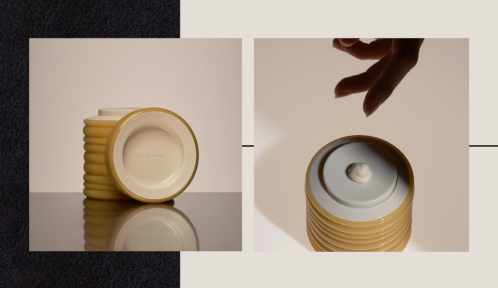Fruit may be nature’s candy, but it’s dried fruit that bears the closest resemblance to the artificial sweet stuff; it’s delicious and just about as sugary as foodstuff comes.
Experts in This Article
clinical nutritionist
registered dietitian and nutritionist
registered herbalist, educator, and founder of Supernatural
plant-based registered dietitian nutritionist and NASM-certified personal trainer
Dried fruit is made by, well, drying out fruit, either in the sun or via a machine dehydrator. It may also be freeze-dried. Removing the water in fruit makes its natural sugar content more concentrated, which is why dried mango, for example, is somehow even tastier (or at least, more confection-like) than fresh mango.
The snack may get a bad rap as a result of this high sugar content, but that’s not the whole story; after all, it’s still fruit, which is far better for you than most things you might find on the inner shelves of the grocery store.
Below, find a more comprehensive rundown of the pros and cons of dried fruit from a health standpoint, some tips for incorporating it into your diet, and a few recipes, too.
Health benefits of dried fruit
First and foremost, dried fruit is a good source of fiber, says Whitney English Tabaie, RDN, author of The Plant-Based Baby and Toddler: Your Complete Feeding Guide for 6 months to 3 years. “Diets rich in fiber, found in dried fruit, are associated with a reduced risk of digestive diseases, heart disease, and obesity,” she says. Fiber can also help reduce constipation and is good for overall digestive health, adds registered dietitian and nutritionist Keri Gans.
It’s a great source of antioxidants, too. “The anti-inflammatory properties from the antioxidants may help decrease the risk for heart disease and certain cancers, and they boost immunity,” Gans says.
And dried fruit is rich in vitamins and minerals, though exactly which ones depends on the specific fruit. Take the benefits of raisins, for example. “Raisins are a good source of iron, potassium, and calcium, while dried plums, aka prunes, provide vitamin A, vitamin K, and boron,” says Gans.
Downsides to dried fruit
As mentioned, dried fruit is high in sugar. In fact, most dried fruits are double, and sometimes even triple, the sugar content of fresh fruit, say wellness experts and nutritionists, like Ariane Hundt. “We’re talking 70 grams of sugar per serving,” says the founder of Slim and Strong, a fitness and food advice program, and Brooklyn Bridge Boot Camp. And sugar, in case you hadn’t heard, is pretty much the devil.
“Most people should limit their daily fruit intake to 30 grams of carbs [of sugar] per day, which is about one banana, one apple, or two cups of berries,” Hundt says. And that’s a lot less than what’s in the typical serving of dried fruit. One cup of fresh cranberries contains 4 grams of sugar and one cup of dried cranberries contains a whopping 70 grams.
The specific sugar in dried fruit is called fructose, and it can create all kinds of havoc on your health, says Hundt. Excess fructose gets quickly converted by the liver into VLDL, a form of cholesterol that’s high in triglycerides, which leads to fat storage. It’s also the type of sugar that creates insulin resistance, heart disease, obesity, and more.
And it’s too easy to eat a lot of dries fruit, adds Gans, because fructose doesn’t signal to your brain when you’re full. “It doesn’t suppress ghrelin or stimulate leptin after you eat,” she explains. (Ghrelin makes you hungry and leptin stops hunger.)
How to incorporate dried fruit into your diet
You don’t have to—and even, shouldn’t—avoid dried fruit altogether, though. Instead, both Gans and Tabaie advise keeping portion size in check. “Practice mindful eating when consuming dried fruit by plating your snack versus eating straight from the bag, and paying attention to your meal so your brain registers fullness,” suggests Tabaie.
Both she and Gans also recommend pairing dried fruit with protein and/or a source of healthy fat to prevent blood sugar spikes and promote satiety. “Pairing dried fruit with a handful of nuts is a great way to balance your snack,” Tabaie says.
In other words, you don’t have to throw out your trail mix; on the contrary, Gans recommends noshing on the popular snack if you want to consume dried fruit in a healthy manner. “Also, tossing raisins or dried cranberries into a chicken salad for added sweetness, topping oatmeal or plain yogurt with dried cherries or blueberries, or adding prunes to decrease the amount of added sugar needed in baking [are all good ways of incorporating dried fruit into your diet],” she says.
Healthy recipes with dried fruit
1. Nootropic Trail Mix Recipe
Sure, you can throw some nuts and dried fruit into a bag and call it a day, or you can level up your trail mix via this recipe from herbalist Rachelle Robinett. It’s designed to defeat brain fog, which makes it the perfect snack to see you through the afternoon slump. Its dried fruit component is goji berries, one of the most antioxidant-rich (and delicious) forms raof dried fruit.
2. Dark Chocolate Pistachio Granola with Dried Cranberries

This quick-and-easy recipe from Tabaie—it literally takes all of five minutes to throw together and then 20 minutes to bake—combines dried cranberries with protein- and fat-rich pistachios, dark chocolate, and granola for a satiating and nutrient-dense brekkie or snack.
3. Dopamine Bean Bliss Balls
Here, Robinett shares her recipe for mood-boosting oat balls made with the adaptogen mucuna pruriens, protein-packed cashews, and dates (among other ingredients).
4. Blueberry Chickpea Cookie Dough Balls

If you’re not up on the whole chickpea cookie dough phenomenon, it’s well past time for you to test the waters. Here, Tabaie shares her recipe for a version packed with two types of dried fruit—dates and blueberries. The resultant treats are a fan favorite of Tabaie’s toddler, but they’re an excellent, protein-packed (thanks, chickpeas!) on-the-go snack for grownups, too.
5. Portable Salad
Here, Robinett offers a hearty salad recipe packed with multiple types of fresh and roasted veggies and then topped with yummy extras like avocado, artichoke hearts, olives, apples, assorted nuts, and the dried fruit(s) of your choice. It’s a great salad to throw together quickly for lunch or grab-and-go for your next commute.
Sign Up for Our Daily Newsletter
Get all the latest in wellness, trends, food, fitness, beauty, and more delivered right to your inbox.
Got it, you've been added to our email list.











